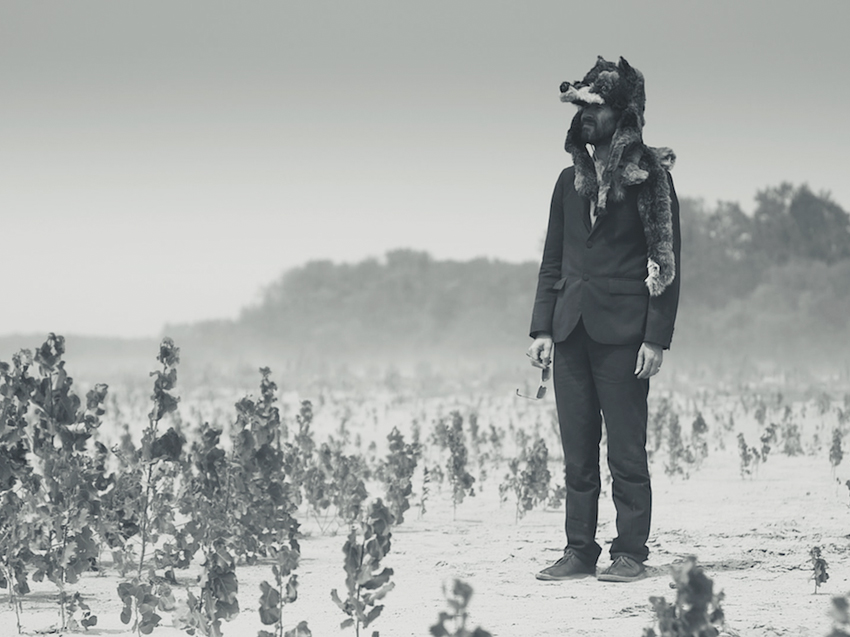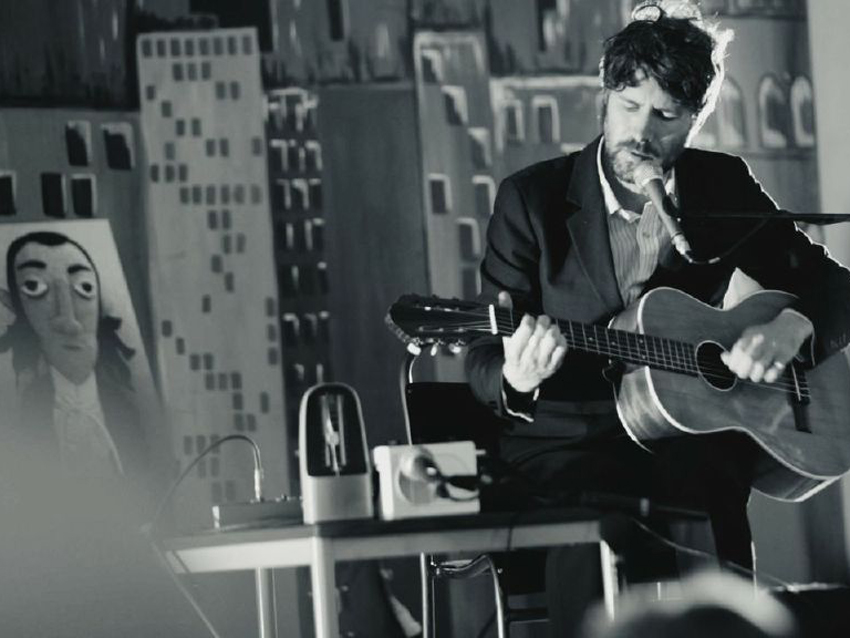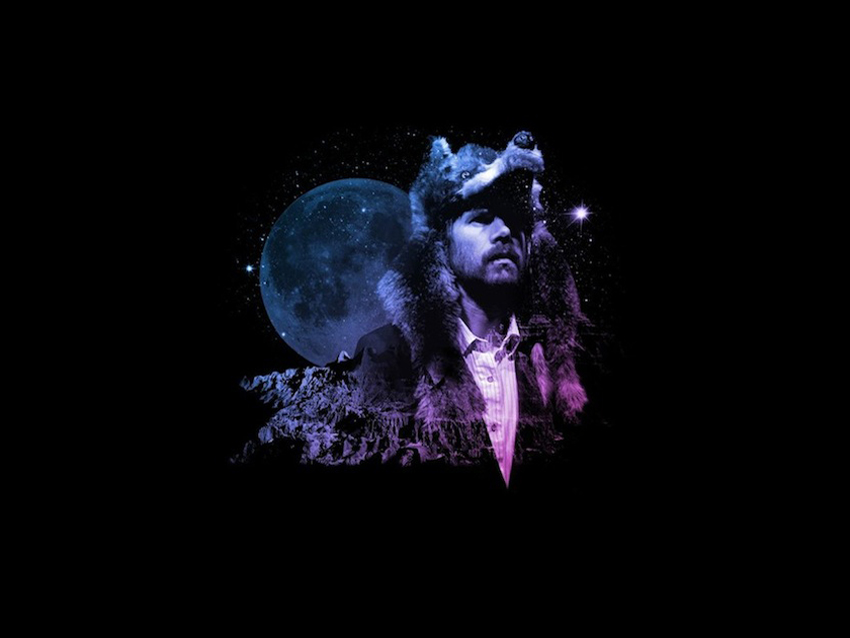Gruff Rhys talks albums as apps and American Interior
Super Furries singer talks solo project

Gruff Rhys talks albums as apps and American Interior
Gruff Rhys shot to fame as singer of Super Furry Animals, the Welsh psychedelic pop group acclaimed for bringing together melodic guitar pop and electronica. Also known for dressing up as yetis, blasting EDM out of army tanks and playing live in surround sound, SFA have released nine albums to date.
With the band currently focusing on solo projects, Rhys has spent the past few years working as one half of the electro-pop outfit Neon Neon, and releasing increasingly conceptual solo records. The latest of these is American Interior, which is released this May as an album, a book, an app and film.
The project is a biographical retelling of the story of John Evans, a historical Welsh explorer who set off on a quest in 1792 to find a lost tribe of Welsh language speakers who'd supposedly settled in America.
Two centuries later Gruff Rhys announced an 'investigative concert tour', whereby he would trace the Evans expedition while playing a series of concerts along the way, with Flaming Lips' Kliph Scurlock on drums. Somehow the gigs turned into an album. And a book. And, well, you know the rest. We caught up with Rhys to discuss the extravaganza...
What was it about John Evans that got you fascinated with him?
"A combination of things. It's a family story [Rhys' father is said to be a descendant of Evans']. And also as we were touring America and going through some of the places he'd been, I started getting curious about the other places he'd gone to. So I asked if I could book a tour along the roads that John Evans took all those years ago."
And he went out to find a Welsh tribe in America?
"Yeah it was believed that this Welsh Prince had discovered America, based on very little evidence. By the time of John Evans, people really believed it and wanted to go and find the tribe. And by finding them, that would be a way out for Welsh people living in poverty, and to find other people who speak their language.
"At the time nobody would give them any money for the expedition, but by that time, John Evans was so into the idea that he borrowed enough money to reach the States. And then once he was there he just kind of walked into the wilderness! He gave his whole life to trying to find the tribe."
Have your recent adventures with Neon Neon influenced your approach to playing with digital instruments?
"I think it's inevitable, in a way. I was working on both records at similar times, and I had one of the synths from the Neon Neon shows lying around when I was recording some of American Interior. So it definitely influenced me.
"Also partly, I recorded in America with an American producer and some American musicians, and some of the songs kind of suggest Americana, but I was probably reacting to that. I really didn't want to make an Americana record because of the title and all the American references. I don't feel qualified to make a rootsy Americana record!
"And although I love country rock and bits of it go into country rock territory, I was really keen for it not to be a some kind of weird, purist roots record. So I was probably reacting to that by throwing loads of synthetic synths over the top!"

Breaking the rules
You've said before that your approach is to feel for good sounds, rather than having a technical knowledge of their workings.
"A good example might be how a lot of DJs become really good producers often, because they don't have really good technical engineering knowledge. They kind of break rules and their techniques are based on just having listened to thousands of records.
"So it's often that I work quite intuitively, and sometimes things don't quite work out because of it! It's sort of trial and error."
So if you had a synth, for example, would you improvise your way into it without looking at the instruction manual?
"Yeah, I mean… I'm not particularly diligent technically. I'm not a great musician really, either! And partly what I love about studios is that you can become any musician in the studio because it's not a performance. Even I can play piano in the studio, although I'm not the world's greatest piano player, but you can get a sound out of almost anything. Especially in the studio!"
How did the different strands of media for American Interior come together?
"It's all come about from a film I made with Dylan Goch about five years ago called Seperado! I did an investigative concert tour, Dylan filmed it, and I recorded the soundtrack. It was pretty straightforward with the film appearing, but I didn't get it together to release the soundtrack. I've still got it, and I need to sequence the songs and things!
"So when I did the tour for American Interior, which Dylan also documented and I recorded an album for, I was really keen to get it together and put the songs out at the same time [as the film].
"There was no contemporary book out about John Evans' story, so I ended up writing an account of the tour that weaves John Evans' story into it.
"Then the app combines everything, really. American Interior is in three acts, so the app has three maps, and you go from A to B along these maps which follow John Evans' routes, and you pick up pieces of text and pieces of film, or fragments of song and photography.
"[The app is] based on the song 100 Unread Messages, which is one of the songs on the album, so you basically travel along three maps and you pick up 100 messages in different types of media. "

Going multimedia
Would you imagine people using it all together, with the app connecting to the book, which connects to the record and so on?
"I think the album hopefully works without having to know the story of John Evans. Although it is some kind of biographical album, it is pretty loose.
"And then if you see the film, which is like a cartoon depiction of John Evans' life, you get a lot of information in it, in an hour and a half, that'll give you a kind of basic knowledge of him.
"The book is more in-depth, and I've been able to go into a lot of detail. The app kind of ties a lot of loose ends together, although a lot of the stuff on the app is unique, in terms of the writing and the films.
"So I think they all compliment each other and they're all pretty different, but you could plausibly read the book and listen to the record at the same time! Which maybe is what the app is like: like watching a film and reading a book and going for a road trip as well."
What do you think John Evans would have made of all this if he was alive today?
"I think for the most part he'd be pretty horrified by it, by these weird, modern day people who don't go to chapel, and are building a weird muppet of him as a visual aid. You know, he might be really offended. I can only really speculate!"
American Interior is available for pre-order now.
For more information visit the official Gruff Rhys website or connect with Gruff on Twitter and Facebook.
"Reggae is more freeform than the blues. But more important, reggae is for everyone": Bob Marley and the Wailers' Catch a Fire, track-by-track
“Part of a beautiful American tradition”: A music theory expert explains the country roots of Beyoncé’s Texas Hold ‘Em, and why it also owes a debt to the blues
"Reggae is more freeform than the blues. But more important, reggae is for everyone": Bob Marley and the Wailers' Catch a Fire, track-by-track
“Part of a beautiful American tradition”: A music theory expert explains the country roots of Beyoncé’s Texas Hold ‘Em, and why it also owes a debt to the blues









